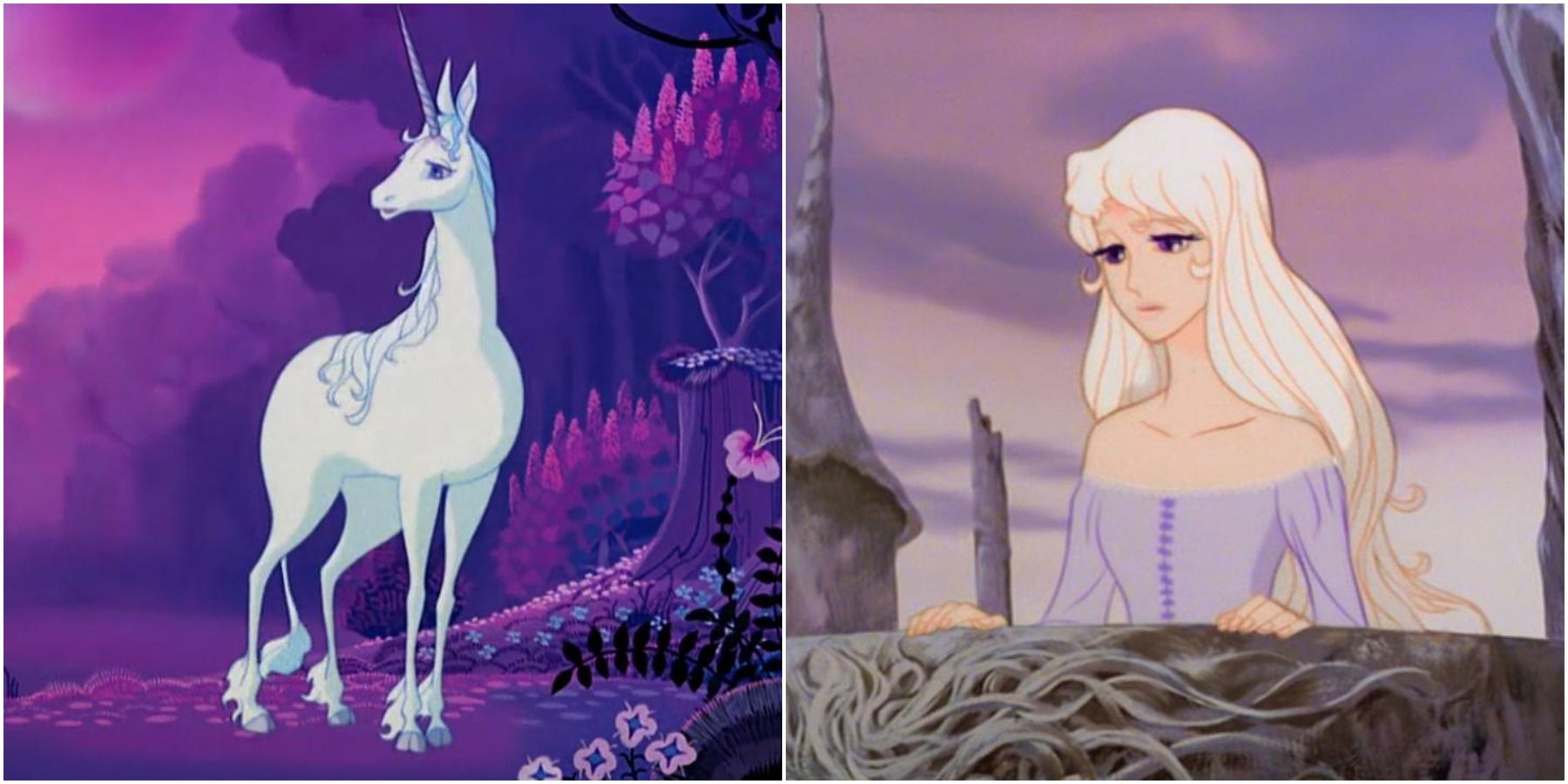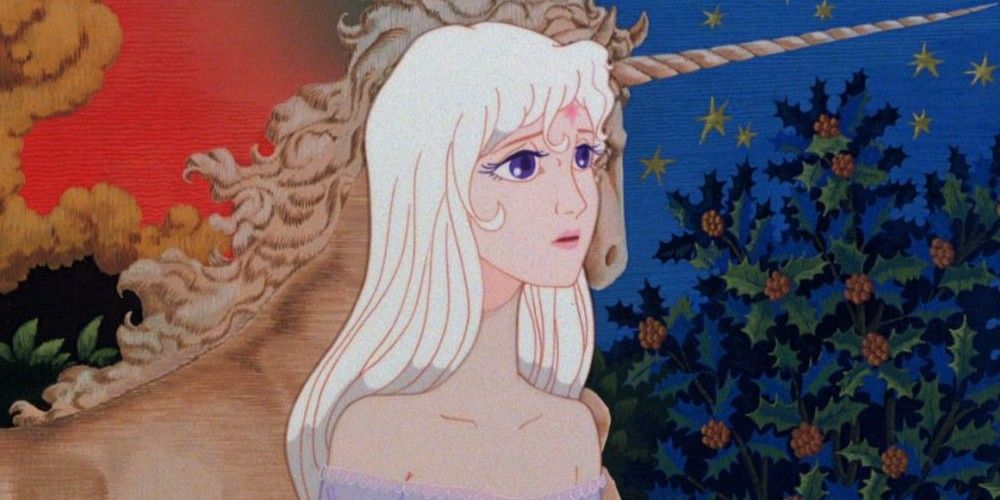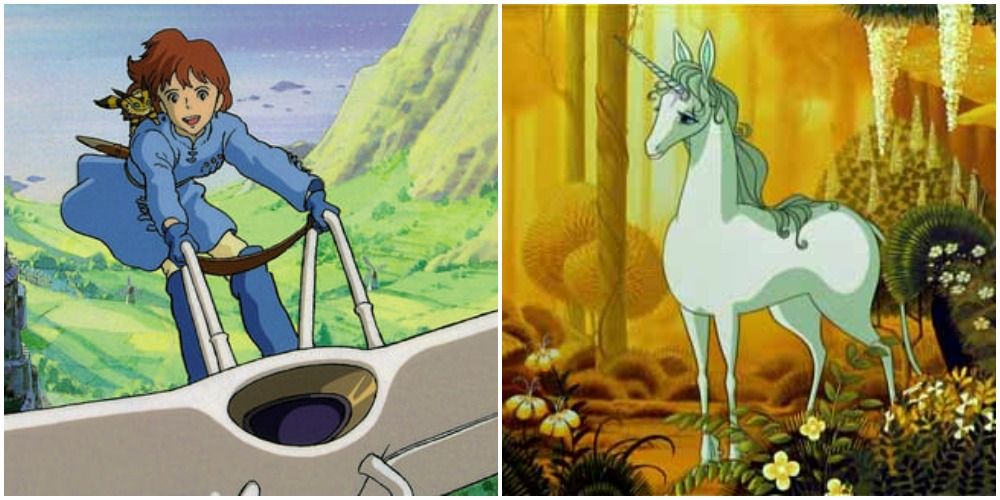In 1982, The Last Unicorn was released with its production done by Rankin/Bass Productions, ITC Films, and Topcraft. The animated film was based on the popular fantasy book by Peter S. Beagle, one that tells the story of a unicorn seeking out the rest of her kind that have disappeared. To this day, the film has a cult following for its imagination, interesting characters, great voice acting, and animation.
What many do not know is that members of Topcraft, the Tokyo-based company, would later go on to make Studio Ghibli with Hayao Miyazaki. From the animation angle, this makes The Last Unicorn a part of Studio Ghibli's history. Looking closely at the characters, magic, and animals in the movie (especially Lady Amalthea herself), the 80s anime-inspired style of the movie begins to shine.
The Last Unicorn And Topcraft
The animation company that would later form Studio Ghibli was founded in 1971. Topcraft's now cult-famous movies include the 80s animated adaptations of Lord of the Rings: The Return of the King, The Wizard of Oz, and The Last Unicorn. The Last Unicorn stands out, though, as it has much in common with Studio Ghibli films in its love of nature, magic, and the feminine. Like Studio Ghibli titles, The Last Unicorn contains themes of feminism, environmentalism, and teaches lessons against fear and greed. Of course, the themes were not Topcrat's doing, but it still caught the eye of Studio Ghibli fans who can't help but compare the two because of Topcraft's involvement.
What Topcraft did do is give the animation a style reminiscent taste of 80s anime with exaggerated faces, wild hair, and large eyes. This anime-like style was especially shown off when the unicorn is human, as Amalthea. The styles were like that of what is considered old anime nowadays like the movie, Galaxy Express 999. Topcraft was actually founded by a former employee of the Toei Animation company, Toru Hara, and made Galaxy Express 999 alongside many other anime films and shows. This is notable, as Amalthea looks as though her design were inspired by the series protagonist, Maetel.
Interestingly enough, the year The Last Unicorn was finished by Topcraft was the same year they hired the famous Hayao Miyazaki. With Topcraft, Miyazaki made Nausicaa of the Valley of the Wind, which would later be known as a Ghibli title despite Studio Ghibli not having formed yet. Just a year after Nausicaa of the Valley of the Wind released, Topcraft was bankrupt and split in half. This split is what kick-started Studio Ghibli, which was formed by one-half of the employees while the other half founded the Pacific Animation Corporation.
From Topcraft To Studio Ghibli
After Topcraft was bought-out, Hara became the first manager of Studio Ghibli and became a part of the early years of the studio along with former Topcraft employees, Miyazaki, Toshio Suzuki, and Isao Takahata. They went on to make Castle in the Sky, Grave of the Fireflies, My Neighbor Totoro, and Kiki's Delivery Service all throughout the rest of the 80s. With each Studio Ghibli film being a major hit, the history of its birth from Topcraft has fallen to obscurity.
However, Studio Ghibli has done similar endeavors to The Last Unicorn in terms of creating animated adaptations to fantasy short stories, books, and manga. These film adaptations include Kiki's Delivery Service, Howl's Moving Castle, Tales from Earthsea, Grave of the Fireflies, The Secret World of Arrietty, Only Yesterday, Whisper of the Heart, and From Up on Poppy Hill. However, Studio Ghibli's stories take on a much lighter and child-friendly tone than The Last Unicorn.
Topcraft left dark stories like The Last Unicorn behind when becoming Studio Ghibli. A lot of The Last Unicorn explored themes of death and had some unforgettably scary creatures such as the harpy and the red bull. It is likely due to its child-friendliness that Studio Ghibli is also a little more liberal with its adaptations than back when it was Topcraft. The Last Unicorn was very faithful to the book while Studio Ghibli works like Howl's Moving Castle and Tales from Earthsea were far more easygoing in sticking to the book narrative.
Nearing its 40th year anniversary, The Last Unicorn has remained a cult classic. It is not technically anime nor a Studio Ghibli piece, but it is part of the backstory of one of the most famous animation studios in the world. The animation is beautiful and actually matches well with the flowery prose and how the story explores magic, death, and love. The Last Unicorn will possibly stand as the closest thing anime fans will get to a dark Studio Ghibli movie next to Princess Mononoke.



